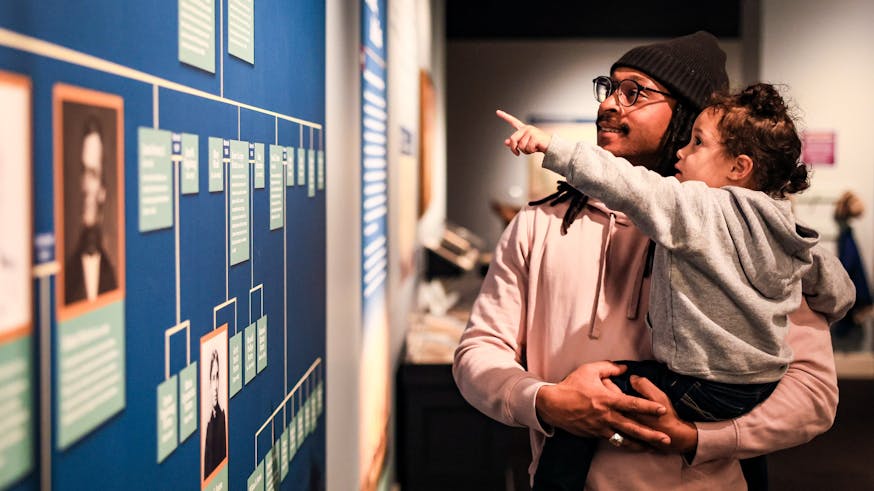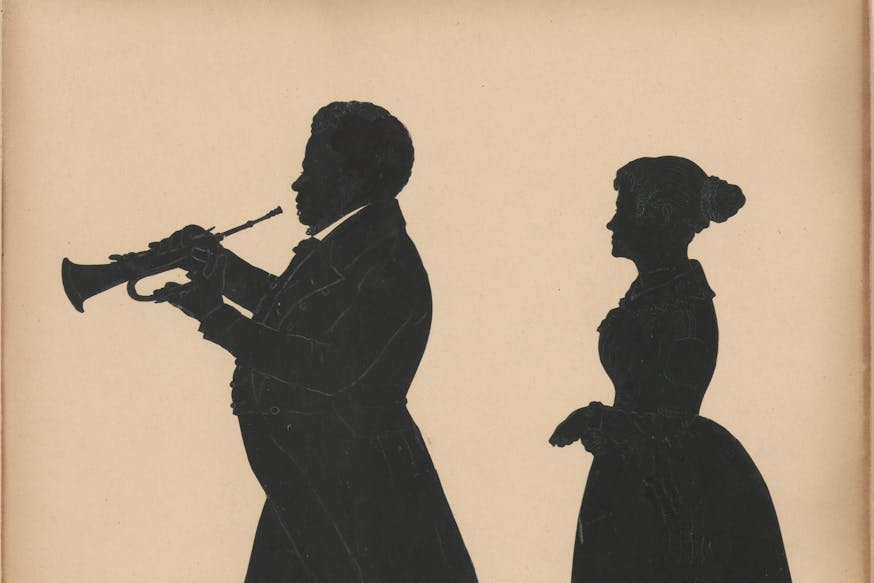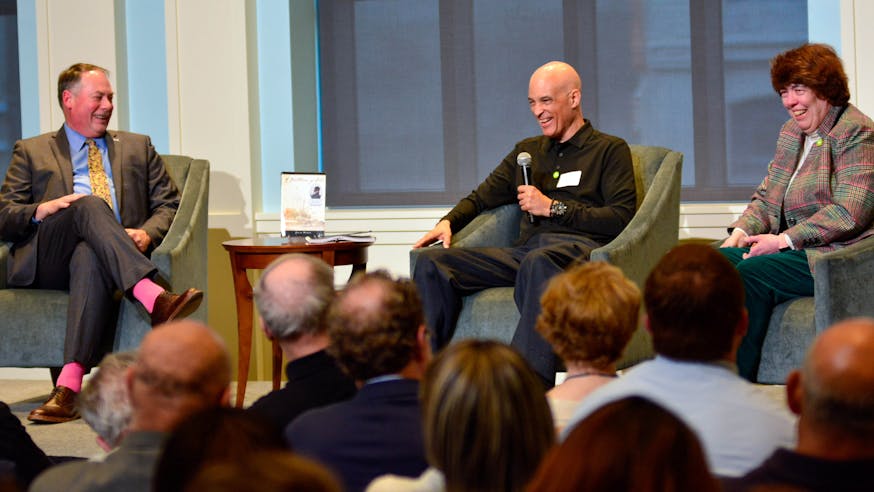Black Founders
Forten Family Heirlooms on Loan from Descendants in Black Founders Exhibit
The Museum’s special exhibition, Black Founders: The Forten Family of Philadelphia, open Feb. 11 – Nov. 26, 2023, features more than 100 historical artifacts, works of art, and documents from 38 different lenders. Notably, amongst those lenders are Forten family descendants, including Atwood “Kip” Forten Jacobs, Marcus and Lorri Huey, and the Robie family, who have lent an array of family heirlooms that have now been in the possession of seven generations of the Forten family. These rare surviving objects have never been displayed publicly in a museum until this exhibit.
Take a closer look at the objects, including the family Bible, a table, samplers, and more, on loan to the Museum from Forten family descendants for display in Black Founders.
Forten Family Bible
Donated to the Museum by Atwood “Kip” Forten Jacobs

This historic Bible is a Forten family treasure that first belonged to Jane Vogelsang Forten, the wife of James Forten Jr. and daughter-in-law of James Forten. It was given to her in 1839, the year of her wedding to James Forten Jr. by the congregation at St. Philip’s African Church, the first Black Episcopal parish in New York City. Jane and James were residents of New York at the time. Over the generations, this Forten family heirloom has become a genealogical record book, linking generations together. Multiple descendants of Jane Vogelsang Forten have added birth dates and death dates for their family members. Atwood “Kip” Forten Jacobs, Jane Vogelsang Forten’s great-great-great-grandson, has added himself and his daughter Taylor, born in 1995, to the family record pages. In 2023, the Jacobs family decided to donate this Bible to the Museum of the American Revolution.
James Forten’s Table
on loan from Marcus and Lorri Huey

This table was once owned by James Forten and used in the Forten home on Lombard Street. He may have acquired this table from a Philadelphia furniture maker around the time he moved into his first home in 1792 or when he purchased the Lombard Street house in 1806. It has now been owned by seven generations of Forten’s descendants and has never left the family. The table is designed with a folding top, so it can be stored against a wall when not in use. It is displayed here fully open with a fifth leg that swings out to help support the top. The top and legs are made of solid mahogany while the sides are made of lower-quality white pine covered with mahogany veneer or thin sheets of wood.
Margaretta Forten’s Sampler
on loan from Marcus and Lorri Huey

Margaretta Forten, the eldest daughter of James Forten and Charlotte Vandine Forten, stitched this sampler when she was about 11 years old. It is unknown if she learned to stitch at a particular school or from a specific teacher. The sampler shows a traditional arrangement with alphabets, a verse, and floral motifs in a Quaker style. The verses Margaretta stitched are from a hymn by Dr. Nathaniel Cotton that was first published in 1761 and appeared in numerous hymnals during the 1700s and 1800s. Margaretta’s sister, Mary, stitched verses from the same hymn on her sampler.
Mary Forten’s Sampler
on loan from Marcus and Lorri Huey

At the age of six, Mary Forten, the youngest daughter of James Forten and Charlotte Vandine Forten, stitched this sampler as part of her childhood education. Making samplers helped girls learn arithmetic, the alphabet, needlework skills, and moral lessons. Forten’s sampler shows a traditional arrangement with alphabets, a verse, and floral motifs in a Quaker style. The verses Mary stitched are from a hymn by Dr. Nathaniel Cotton, the same verses that Mary’s sister, Margaretta, stitched on her sampler.
Purvis Family Objects (Spoon, Candle Snuffer, and Document Box)
on loan from Marcus and Lorri Huey as well as the Robie family

This silver spoon engraved with the letter “P,” candle snuffer, and document box have been passed down through six generations of the Purvis family and are still owned by descendants of Robert Purvis. They are among the few personal belongings of Robert Purvis and Harriet Davy Forten Purvis that survive. According to a Purvis family story, women’s rights activist Susan B. Anthony so admired Robert Purvis and his commitment to equality that she once wrote, “I only eat my porridge with one of Robert Purvis’s spoons.” The brass plate attached to the document box is engraved with Robert Purvis’s name. He may have used the box to hold his writings and papers. The ceramic plate also seen here is on loan from Colonial Williamsburg and was a gift to Colonial Williamsburg from the Robie family. The plate, once owned by Robert Purvis’s family, commemorates abolitionist newspaper printer Elijah P. Lovejoy.
See the objects in our special exhibition, Black Founders: The Forten Family of Philadelphia, open through Nov. 26, 2023.
Learn More

Black Founders: The Forten Family of Philadelphia
February 11 - November 26, 2023
The Music of Francis Johnson: A Soundtrack to Antebellum Black Philadelphia
